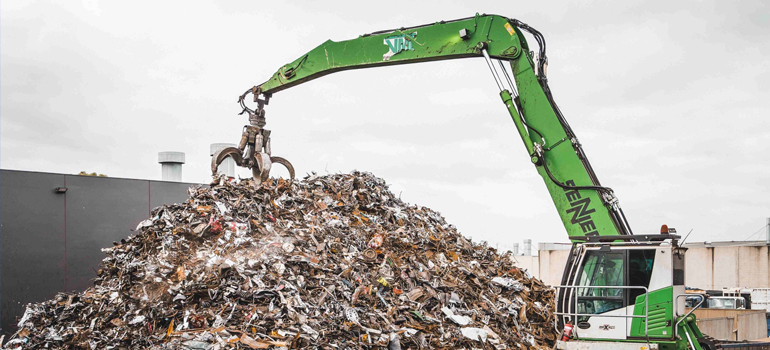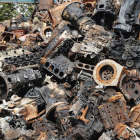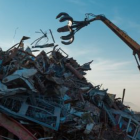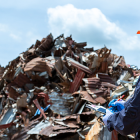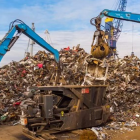Scrap metal recycling is a multi-billion-pound industry, playing a vital role in conserving resources and reducing environmental waste. For businesses and individuals involved in scrap trading, understanding scrap metal prices is crucial. These prices are not static; they fluctuate based on numerous factors that shape the global and local market dynamics.
This blog delves into the key factors influencing scrap metal prices, helping buyers, sellers, and recyclers make informed decisions.
Why Do Scrap Metal Prices Matter?
The value of scrap metal directly affects the profitability of recycling businesses, the income of sellers, and even the cost of raw materials for manufacturers. By understanding what drives these prices, stakeholders can:
* Optimize the timing of buying or selling.
* Navigate market volatility.
* Identify trends to make strategic decisions.
1. Supply and Demand
Like any commodity, scrap metal prices are influenced by the basic economic principle of supply and demand.
High Demand, Low Supply
When industries like construction, automotive, or electronics manufacturing experience high demand, the need for raw materials increases, pushing up scrap prices. Conversely, when supply is scarce due to lower recycling rates or disruptions in collection, prices also rise.
Low Demand, High Supply
If industries slow down or there’s an oversupply of scrap, prices tend to drop. For example, during economic recessions, demand for metals like steel and aluminum often decreases, lowering their value.
Example: After the COVID-19 pandemic, fluctuations in industrial activity caused significant shifts in scrap metal prices.
2. Global Metal Prices and Commodity Markets
Scrap metal prices are closely tied to the global metal market. Primary metals like copper, aluminum, and steel serve as benchmarks for scrap metal pricing.
* Copper Prices: Widely used in electronics and construction, copper’s price can significantly impact scrap metal rates.
* Aluminum Prices: Often driven by changes in the automotive and packaging industries.
Influencing Factors:
* LME Index: The London Metal Exchange sets the benchmark prices for metals, influencing scrap values globally.
* Currency Fluctuations: Since metals are traded internationally, currency strength (e.g., the GBP against USD) can impact prices.
3. Quality and Type of Scrap Metal
Not all scrap metal is created equal. The type and condition of the metal significantly affect its price.
Non-Ferrous Metals (Higher Value)
* Copper: Highly sought after and commands a premium price.
* Aluminum: Lightweight and widely used, making it valuable but less expensive than copper.
* Brass: A mix of copper and zinc, commonly found in plumbing fixtures.
Ferrous Metals (Lower Value)
* Steel: Heavily used in construction but less valuable due to abundance.
* Cast Iron: Often recycled but fetches lower prices compared to non-ferrous metals.
Condition Matters:
* Clean and sorted metals fetch higher prices than contaminated or mixed scraps.
* Metals free from insulation or coatings (e.g., stripped copper wire) are more valuable.
4. Geopolitical Factors
Global political and economic events play a significant role in shaping scrap metal prices.
Trade Policies and Tariffs
Import and export restrictions can impact metal prices by altering supply chains. For instance, the UK’s post-Brexit trade agreements have affected the movement of scrap metal within Europe.
Global Conflicts
Wars or international disputes can disrupt mining and production, increasing reliance on recycled metals and driving up prices.
5. Recycling Costs and Technology
The cost of recycling processes influences how much buyers are willing to pay for scrap.
Energy Costs
Recycling metals requires significant energy, especially for melting and refining. Rising energy prices increase recycling costs, potentially lowering scrap prices.
Advancements in Recycling Technology
New technologies that improve efficiency or recover more metal from waste can make certain scrap types more valuable.
6. Seasonal Trends
Scrap metal prices can also vary with the seasons.
* Summer (High Activity): Construction projects and manufacturing often peak, increasing demand for metals.
* Winter (Low Activity): Harsh weather can slow down recycling and industrial activities, leading to lower demand and prices.
7. Environmental Regulations
Governments worldwide, including the UK, have implemented stringent environmental policies to promote recycling and reduce waste.
* Strict Recycling Mandates: Businesses may be incentivized to recycle more, increasing the availability of scrap metal.
* Carbon Taxes: Industries reliant on primary metals may turn to recycled materials to lower costs, boosting demand for scrap.
8. Transportation and Logistics
The cost and ease of transporting scrap metal influence its final value.
* Proximity to Processing Facilities: Scrap collected near recycling plants or ports fetches higher prices due to lower transportation costs.
* Fuel Prices: Rising fuel costs increase the expense of moving scrap, which can reduce profit margins.
9. Technological Advancements in Industries
Innovations in manufacturing and recycling industries can influence demand for specific types of metals.
* Electric Vehicles (EVs): The growing EV market has increased demand for metals like lithium, nickel, and copper.
* Renewable Energy: Wind turbines and solar panels rely on aluminum, steel, and rare earth metals, driving up demand for these materials.
10. Market Sentiment and Speculation
Investor sentiment and speculative trading in commodity markets can also impact scrap metal prices.
* Bullish Markets: Optimistic outlooks on industrial growth push up prices.
* Bearish Markets: Concerns about economic slowdowns or reduced industrial activity can drive prices down.
How to Stay Updated on Scrap Metal Prices
1. Monitor Market Trends
Follow resources like:
* London Metal Exchange (LME)
* Scrap metal price trackers
* Industry-specific news portals
2. Build Relationships
Engage with local scrap yards, recyclers, and brokers to gain insights into pricing trends and market dynamics.
3. Leverage Technology
Use mobile apps and platforms that provide real-time scrap metal prices and analytics.
Conclusion
Scrap metal prices are influenced by a complex interplay of factors, from global market trends to local logistics and environmental regulations. For businesses and individuals navigating the scrap industry, understanding these dynamics is essential to maximizing profits and making informed decisions.
By staying updated on market trends, investing in quality sorting, and leveraging technology, stakeholders can thrive in this ever-evolving industry. In a world increasingly focused on sustainability, the role of scrap metal recycling—and those who understand its pricing mechanisms—will only grow in importance.

